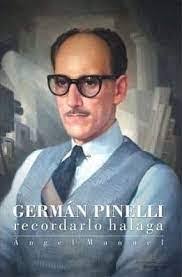
GERMAN PINELLI, AFAMADO LOCUTOR, ACTOR Y CONDUCTOR DE LA RADIO Y LA TELEVISION CUBANA. PHOTOS.
Germán Pinelli. Célebre conductor, actor y locutor de la radio y la televisión cubana. Es considerado uno de los profesionales de la palabra más cultos y versátiles de los medios cubanos.
Pillelli nació en La Habana el 15 de diciembre de 1907. Su nombre completo es Gregorio José Germán Piniella Vázquez de Mella. Su familia de origen estaba conformada por sus dos padres y cinco hermanos. Su padre era comerciante del alto comercio de La Habana sin llegar a ser burgués, y la madre era una mujer de una vastísima cultura.
ESTUDIOS REALIZADOS
Inicio sus estudios en el Sapetter de París y después en el Conservatorio Real de Madrid, específicamente en el arte de la declamación. Aunque hijo de padre asturiano y madre madrileña, Germán Pinelli, como se le conoce, fue un cubano de pura cepa.
CARRERA ARTISTICA
La inclinación de Pinelli por el arte fue palpable desde la temprana infancia. Con solo seis años y medio cantó en el Teatro Nacional. Tenía una voz de tenor clara y firme. Según testimonio de su hermana Soledad, compañera y guía en su carrera artística, en 1920, cuando Enrico Caruso visitó La Habana, escuchó a Germán Pinelli interpretando la Cavallería Rusticana y La romanza de Carmen y tuvo palabras de elogio para el joven cantante.
Su primera incursión en los medios de comunicación masiva se produjo cuando tenía apenas 14 años de edad, el 28 de octubre de 1922. El entonces estudiante del prestigioso Colegio de Belén cantó a través de las ondas radiales, a menos de cuatro meses de haberse realizado la primera transmisión radial en Cuba. Esta transmisión de la PWX de la Cuban Telephone Company se produjo desde el capitalino Teatro Campoamor, en lo que es considerado el primer control remoto musical de la planta.
Se alejó del arte para matricular Derecho en la Universidad de La Habana, pero, en 1925, abandonó la carrera para seguir a su hermana Soledad en una gira por toda la Isla, como parte de la compañía teatral en la que ella actuaba, cantaba y declamaba. Anteriormente, había ganado una beca para estudiar “bel canto” en Italia pero nunca recibió los fondos.
A pesar de no haber culminado los estudios superiores,de forma autodidacta, aprendió varios idiomas (inglés, francés e italiano) y varios instrumentos musicales (guitarra, piano, serrucho musical). Formó parte de la compañía de zarzuelas del Teatro Payret, con la que interpretó obras como El gato montés. Estudió canto con Tina Farelli y Arturo Bovy, dos profesores muy reconocidos de la época. A pesar de sus aptitudes naturales, Pinelli vio frustrados su quehacer como cantante lírico después de sufrir afectaciones en el sistema respiratorio. No obstante, a lo largo de su carrera artística explotó frecuentemente su educación musical.
A inicios de la década del ‘30, trabajó en diversas emisoras radiales capitalinas; entre ellas, CMCB ubicada en el Edificio de “La Metropolitana”, en la Habana Vieja, la CMBN y la CMK. Entró a CMQ en 1933 como redactor de notas para el Noticiero Nacional y dos años después ya era redactor y jefe de cuatro noticieros de la poderosa planta.
El debut como locutor fue en un programa de medianoche dedicado a la transmisión de música grabada. Para desempeñarse como locutor tuvo que enfrentar los criterios opuestos de Goar Mestre, dueño de la CMQ, quien, al principio, dudó de sus aptitudes para la locución. Años más tarde, en diciembre de 1937, se estrenó como conductor del popular espacio La Corte Suprema del Arte. De este programa de participación, surgieron figuras prominentes del mundo del espectáculo tales como la Vedette de América, Rosita Fornés. Con los ganadores del certamen, conocidos como las Estrellas Nacientes de CMQ, Pinelli dirigió y condujo múltiples espectáculos que se presentaron en los teatros de casi todo el país.
En estas giras nacionales, Pinelli solía, además, interpretar algunos personajes; por ejemplo el 28 de febrero de 1939, durante la puesta en escena de Cecilia Valdés en el Teatro Nacional, interpretó el papel de “Gallego”. Entre sus habilidades más reconocidas estaba la locución comercial. En 1938, era uno de los locutores más cotizados por firmas como Cerveza Polar, RCA Victor, Cerveza Cristal y la Fábrica de Cigarros Competidora Gaditana.
Durante el año 1942, escribió una sección del periódico Avance, titulada CMQ por dentro, al tiempo que hacía trabajos para el departamento literario de la poderosa emisora radial. En su carrera como locutor, resaltan algunos trabajos como la locución habitual del programa del líder del Partido Ortodoxo, Eduardo Chibás , que salió al aire todos los domingos a las 8 de la noche, por las ondas de la CMQ, desde febrero de 1944 hasta agosto de 1951. Pinelli no hizo la locución el día que Eduardo Chibás se disparó en la cabina de la CMQ, pero desempeñó un rol protagónico en la transmisión de las noticias relacionadas con este hecho.
Además, se recuerda su narración, en vivo, de la masacre de Orfila, el 15 de septiembre de 1947. Otros momentos históricos contaron con la voz del insigne locutor: la inauguración del edificio Radiocentro, en marzo de 1948 y, después del triunfo revolucionario, algunas marchas patrióticas y el sepelio de las víctimas del sabotaje al vapor La Coubre.
Su labor en la radio fue realmente intensa durante 1948. Algunos de los proyectos en los que trabajó fueron Buscando estrellas, Cascarita show, Radio revista CMQ, No lo digas y Entrevista de hoy, que se mantuvo en antena hasta diciembre de 1952. Además laboró en otros espacios como Carnaval Trinidad y Hermanos (1950) y Pinelli en la calle o Habla Pinelli (1953), donde hizo gala de sus habilidades de entrevistador y periodista.
El 18 de diciembre de 1950, cuando surgió la programación de la segunda televisora cubana (CMQ Televisión, Canal 6), Pinelli hizo prevalecer su talento, para crear un nuevo tipo en la conducción de espacios televisivos. El día de la inauguración de la planta, ante el extravío del libreto y desafiando la desconfianza de Goar Mestre, Pinelli fue llamado para improvisar y rellenar el espectáculo. A partir de ese momento, su labor de comunicador se consolidó con la aprobación del público.
El medio televisivo le ofreció la posibilidad de desempeñarse en otros géneros y papeles. Como animador, hizo El show del mediodía (1951) y, junto a José Antonio Cepero Brito, Aquí todos hacen de todo (1951-1960). Fue narrador de Los Muñequitos (1952), Abecedario Zenith y Norge (1953) y Cine del ayer (1954).
Después de 1959, protagonizó múltiples espacios habituales de la televisión y el mundo del espectáculo. Entre sus actuaciones inolvidables, se encuentra el personaje de Éufrates del Valle de San Nicolás del Peladero, programa costumbrista que mantuvo altos índices de popularidad durante más de 20 años (entre las décadas de 1960 y 1980). Durante ese tiempo compartió la pantalla con muchas de las grandes figuras de la radio, la televisión, el teatro y el cine cubanos. Entre ellos puede mencionarse a Enrique Santiesteban, María de los Ángeles Santana y Enrique Arredondo.
MUERTE
Falleció en La Habana el 20 de noviembre de 1995 a los 88 años de edad.
FILMOGRAFIA
Germán Pinelli dejó su huella en el cine, con los papeles interpretados en los filmes Leyendas y Los sobrevivientes (Tomás Gutiérrez Alea). (1978). Este último también contó con la actuación de Vicente Revuelta, Enrique Santiesteban, Carlos Ruíz de la Tejera y Reinaldo Miravalles.
PREMIOS
Recibió numerosos premios nacionales y fue uno de los pocos locutores de Iberoamérica que recibió dos veces el Premio Onda, galardón otorgado a los mejores locutores de habla hispana, como reconocimiento a su labor profesional.
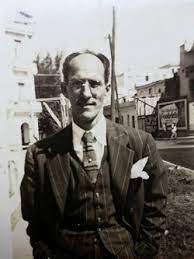
GERMAN PINELLI, FAMOUS ANNOUNCER, ACTOR, AND CUBAN RADIO AND TELEVISION HOST. PHOTOS.
Germán Pinelli. Renowned Cuban radio and television host, actor, and announcer. He is considered one of the most cultured and versatile spoken word professionals in the Cuban media.
Pilelli was born in Havana on December 15, 1907. His full name is Gregorio José Germán Piniella Vázquez de Mella. His family of origin consisted of two parents and five siblings. His father was a merchant in Havana’s high-class trade, but not yet a bourgeois, and his mother was a highly educated woman.
STUDIES COMPLETED
He began his studies at the Sapetter School in Paris and later at the Royal Conservatory of Madrid, specifically in the art of elocution. Although the son of an Asturian father and a Madrid mother, Germán Pinelli, as he is known, was a true Cuban.
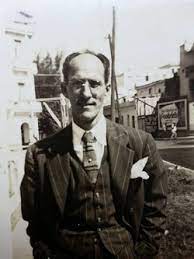
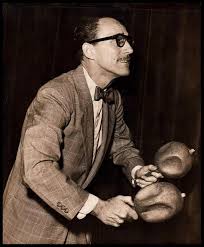
ARTISTIC CAREER
Pinelli’s inclination for art was evident from early childhood. At just six and a half years old, he sang at the National Theater. He had a clear and firm tenor voice. According to his sister Soledad, a companion and guide in his artistic career, in 1920, when Enrico Caruso visited Havana, he heard Germán Pinelli performing Cavallería Rusticana and La Romanza de Carmen and had words of praise for the young singer.
His first foray into mass media came when he was just 14 years old, on October 28, 1922. The then student at the prestigious Colegio de Belén sang over the airwaves, less than four months after the first radio broadcast in Cuba. This PWX broadcast of the Cuban Telephone Company was produced from the capital’s Campoamor Theater, in what is considered the plant’s first musical remote control.
She abandoned art to enroll in law at the University of Havana, but in 1925, she abandoned her studies to follow her sister Soledad on a tour throughout the island, as part of the theater company in which she acted, sang, and recited. She had previously won a scholarship to study bel canto in Italy but never received the funds.
Despite not completing her higher education studies, she taught herself several languages (English, French, and Italian) and several musical instruments (guitar, piano, and musical saw). She was part of the zarzuela company at the Payret Theater, with which she performed works such as El gato montés (The Wild Cat). She studied singing with Tina Farelli and Arturo Bovy, two highly regarded teachers of the time. Despite his natural talent, Pinelli found his career as a lyrical singer frustrated after suffering from respiratory problems. However, throughout his artistic career, he frequently utilized his musical training.
In the early 1930s, he worked at various radio stations in the capital, including CMCB, located in the “La Metropolitana” building in Old Havana, CMBN, and CMK. He joined CMQ in 1933 as a news editor for the National Newscast, and two years later he was editor and chief of four newscasts for the powerful station.
His debut as an announcer was on a midnight program dedicated to broadcasting recorded music. To become an announcer, he had to face the opposing views of Goar Mestre, owner of CMQ, who initially doubted his broadcasting abilities. Years later, in December 1937, he debuted as the host of the popular program “La Corte Suprema del Arte.” From this participation program, prominent figures in the entertainment world emerged, such as the Vedette of America, Rosita Fornés. With the winners of the contest, known as the Rising Stars of CMQ, Pinelli directed and hosted numerous shows that were presented in theaters throughout the country.
During these national tours, Pinelli also frequently played various characters; for example, on February 28, 1939, during the production of Cecilia Valdés at the National Theater, he played the role of “Gallego.” Among his most recognized skills was commercial voiceover work. By 1938, he was one of the most sought-after announcers for companies such as Cerveza Polar, RCA Victor, Cerveza Cristal, and the Competidora Gaditana Cigar Factory.
During 1942, he wrote a section for the newspaper Avance, titled “CMQ por dentro,” while also working for the literary department of the powerful radio station. His career as a broadcaster includes notable work such as his regular hosting of the program of the leader of the Orthodox Party, Eduardo Chibás, which aired every Sunday at 8 p.m. on the CMQ radio stations from February 1944 to August 1951. Pinelli did not provide the hosting duties on the day Eduardo Chibás shot himself in the CMQ booth, but he played a leading role in broadcasting the news related to the event.
In addition, we remember his live narration of the Orfila massacre on September 15, 1947. Other historic moments featured the voice of the distinguished broadcaster: the inauguration of the Radiocentro building in March 1948 and, after the revolutionary triumph, several patriotic marches and the funeral of the victims of the sabotage of the steamship La Coubre.
His work in radio was truly intense during 1948. Some of the projects he worked on included Buscando estrellas (Searching for Stars), Cascarita Show (The Cascarita Show), Radio Revista CMQ (CMQ Magazine), No lo digas (Don’t Say It), and Entrevista de hoy (Today’s Interview), which remained on the air until December 1952. He also worked on other programs such as Carnaval Trinidad y Hermanos (Carnival Trinidad y Hermanos) (1950) and Pinelli en la calle (Pinelli in the Street) or Habla Pinelli (Pinelli Speaks) (1953), where he demonstrated his skills as an interviewer and journalist.
On December 18, 1950, when the programming of Cuba’s second television station (CMQ Televisión, Channel 6) was launched, Pinelli used his talent to create a new type of television hosting experience. On the day of the station’s inauguration, after losing the script and defying Goar Mestre’s distrust, Pinelli was called in to improvise and fill in the show. From that moment on, his work as a communicator was consolidated with the public’s approval.
Television offered him the opportunity to work in other genres and roles. As a host, he directed El show del mediodía (1951) and, with José Antonio Cepero Brito, Aquí todos hace de todo (Aquí todos hace de todo) (1951-1960). He was the narrator for Los Muñequitos (1952), Abecedario Zenith y Norge (1953), and Cine del ayer (Cinema del ayer) (1954).
After 1959, he starred in numerous television and entertainment programs. Among his unforgettable performances was the character of Euphrates del Valle in San Nicolás del Peladero, a traditionalist program that remained highly popular for more than 20 years (between the 1960s and 1980s). During that time, he shared the screen with many of the great figures of Cuban radio, television, theater, and film. Among them were Enrique Santiesteban, María de los Ángeles Santana, and Enrique Arredondo.
DEATH
He died in Havana on November 20, 1995, at the age of 88.
FILMOGRAPHY
Germán Pinelli made his mark in cinema, with roles in the films Leyendas and Los supervivientes (Tomás Gutiérrez Alea) (1978). The latter also featured appearances by Vicente Revuelta, Enrique Santiesteban, Carlos Ruíz de la Tejera, and Reinaldo Miravalles.
AWARDS
He received numerous national awards and was one of the few Latin American broadcasters to twice receive the Onda Award, given to the best Spanish-speaking broadcasters, in recognition of his professional work.
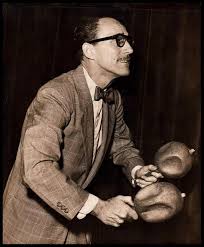
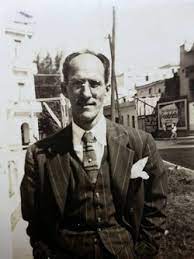
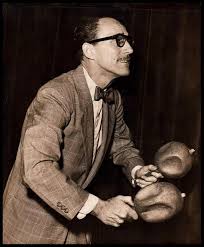
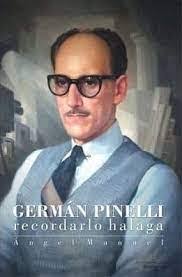
Agencies/ Wiki/ Ecured/ GermanPinelliBio. / Extractos/ Excerpts/ Internet Photos/ Arnoldo Varona.
www.TheCubanHistory.com
THE CUBAN HISTORY, HOLLYWOOD.





 GERMAN PINELLI, AFAMADO LOCUTOR, ACTOR Y CONDUCTOR DE LA RADIO Y LA TELEVISION CUBANA. PHOTOS. * GERMAN PINELLI, FAMOUS ANNOUNCER, ACTOR, AND CUBAN RADIO AND TELEVISION HOST. PHOTOS.
GERMAN PINELLI, AFAMADO LOCUTOR, ACTOR Y CONDUCTOR DE LA RADIO Y LA TELEVISION CUBANA. PHOTOS. * GERMAN PINELLI, FAMOUS ANNOUNCER, ACTOR, AND CUBAN RADIO AND TELEVISION HOST. PHOTOS.